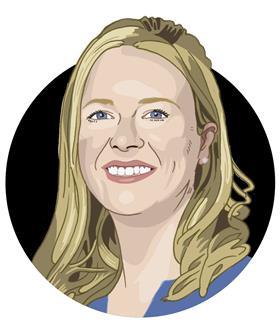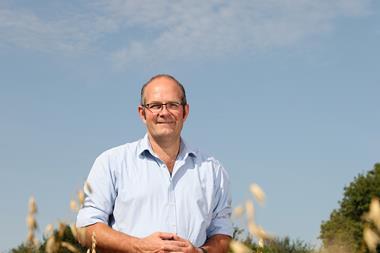In the latest of our power list series on women in grocery, we look at the progress manufacturers are making on gender diversity, and shine a light on the high-profile female talent rising to the top
When the First World War broke out in 1914, it didn’t take long for the Cadbury factory in Birmingham to become a hive of activity in support of the war effort. With most of its male workers sent overseas, that meant turning to female employees for the very first time to keep its rivers of chocolate churning. These ‘Cadbury Angels’ – so called due to their pristine white uniforms – launched a programme making ‘chocolate for the troops’, sending over tens of thousands of packages containing Cadbury chocolate, clothing and books. Each one also held a letter: ‘A present to our friends at the front from the workpeople at Cadbury’s Bournville.’
Yet while it marked a moment of pride held to this day in the company’s history, it didn’t last. When the war ended, so did the Angels’ employment, with the factories quickly returning to male-dominated arenas.
Over 100 years later, such food manufacturing jobs remain dominated by men. At Heinz, for example, men make up 87% of the manufacturing roles which in turn constitute two-thirds of the entire workforce. Similarly at Britvic, owner of brands such as Robinsons and Tango, men make up 70% of the roles.
In general, there is also a pay skew, with men earning more at 79% of food manufacturers, according to analysis by Just Food last year. But curiously, in a few cases, this dominance of men in (often lower paid) factory roles reverses the trend, meaning pay is actually skewed in favour of women. At Mars, for example, median figures show women are paid £1.34 for every £1 paid to men. At Britvic, it’s £1.15. While at Unilever it’s £1.05.
The companies themselves make clear the primary driver of this is the heavy weighting of their operations towards manufacturing and distribution, both areas where the balance of the workforce is predominantly male.
At Unilever, where 68% of its factory workforce is men, according to its latest gender pay gap report, most women are found in managerial roles and so “women earn more on average than men”. Similarly at Britvic: “A large proportion of our workforce sits within supply chain and manufacturing, which is typically male-dominated and in the lower-level paid roles. This will therefore be reflected within the inclusion pay gap data,” it says in its latest pay gap report.
Paradoxically, this could mean that as food manufacturers improve their gender diversity in these roles, their overall gender pay gap figures could narrow away from the slight advantage women currently hold.
It’s a tough one though. Food manufacturing jobs, along with IT, warehousing, and operations are some of the most challenging in which to achieve gender parity, according to an IGD report. For that reason, a handful of manufacturers are taking an active role in sponsoring school and university students to take science, technology, engineering and mathematics (STEM) subjects. Others are turning to international pools of talent – particularly from Russia and Poland – to introduce more women from a STEM background to their workforce. There is also another trend expected to help balance gender diversity: “the fact that manufacturing is becoming increasingly automated is opening up the opportunity for more flexible working in some factories” the report said.
“There is no shortage of capable women ready and willing to take on bigger roles”
Denise Wilson, CEO of the FTSE Women Leaders Review
Diageo – maker of Guinness, Baileys and Smirnoff – is one of those trying to address this shortfall. Part of its plan involves partnering with Heriot-Watt University to provide financial support, mentorship and ongoing career guidance to women studying brewing and distilling, or mechanical engineering.
Thanks to measures like these, manufacturing is not quite as male-dominated as it used to be. The culture is certainly different. “Walking into a factory 10-15 years ago I would have been quite confident of being the only woman,” says Emma White, an ambassador for Women in the Food Industry. “Now it nearly always feels very different.”
And yet it’s not just at the factory level where manufacturing has diversity problems. As is common elsewhere, the top jobs are also often dominated by men. At Warburtons, for example, less than one in six of jobs in the top quartile has been occupied by women, while at Kellogg’s it’s one in five. Specifically at board level, Coca-Cola is in the bottom six of all FTSE 350 companies, according to the latest FTSE Women Leaders Review report, with just four of its 13 positions held by women.
Manufacturers are improving. This is seen in the fact that women now make up 41% of all jobs in food and drink businesses in the FTSE 350, up from 36% in 2017, according to analysis by Grant Thornton in 2021.
The goods news it that on this trend, gender parity will be achieved by 2032, the analysis found. The bad news is that at manager level, parity will take until 2045. “There is simply not enough talent progressing to board level and clearly this must be addressed,” it said.
“There is no shortage of capable women ready and willing to take on bigger roles,” says Denise Wilson, CEO of the FTSE Women Leaders Review. “Removing the bias from the selection process, family-friendly working environments, equal parenting and affordable childcare are critical to delivering this.”
External pressure can also make a difference. For listed companies, that may be from investors. For customer-facing brands it might be their shoppers. And for a few manufacturers, it’s starting to be the supermarkets.
“It doesn’t happen often but there are definitely a few female buyers out there who are interested in the company and what we’re doing on diversity, and not just the price,” says one supplier.
One way for buyers to assess this is through B Corp, a certification that covers environmental, social and governance issues, including those on gender and diversity. For Emma Heal, MD of Lucky Saint, it is not only a way to prove your credentials, but also assess your flaws. “It asks the challenging questions all businesses need to face and prompts them to look at areas of focus.”
A MESSAGE FROM THE SPONSOR
When analysing women’s equality within the manufacturing sector, the findings are concerning: 79% of major food manufacturers pay their male employees more than their female counterparts and 70% of the top-paying roles are held by men. For an industry worth an estimated £29bn, it is astonishing that this level of pay inequality has seemingly slipped beneath the radar. Could it be due to the industry being under less public scrutiny than other larger sectors?

However, it becomes clear when diving deeper that not all is doom and gloom. Mars currently has 43% of leadership positions held by women, Diageo has increased female board representation from 44% to 64% in recent years. And at Unilever 54% of managers are women.
So yes, manufacturers must acknowledge and strive to improve gender imbalances as well as the stark pay gaps within their companies. But to really see change, we need to start at the source by working within the education system to inspire young women to be a part of manufacturing’s future.
Only 15% of engineering and technology graduates in the UK are women, compared to 30% in other countries such as India. In a sector heavily reliant on engineering and technology brilliance, this does go some of the way to explain why we see so few women in the top roles across food manufacturing.
Emily Deer, Director at Newton Europe

Women’s power list: the 10 making manufacturing a woman’s world

These are the 10 women blazing a trail to take over grocery manufacturing
- 1
 Currently
reading
Currently
reading
How women are rising to the top in grocery supply and manufacturing























No comments yet